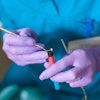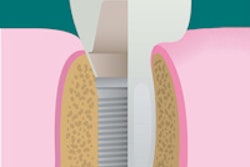A study published in the Journal of Implantology has introduced a new, more advanced method for bone and tissue regeneration that prevents infection (August 2013, Vol. 39:4, pp. 503-509).
The most commonly used treatment for postextraction regeneration has been a combination of acellular dermis matrix (ADM), a type of bone regenerating material that uses cadaveric tissue with all the cells removed, and different grafting procedures. However, there have been no solid histologic data or microscopic tissue samples to prove that this regeneration is working properly.
The case series examines a new ADM replacement material called decellularized dermis matrix (DDM) that, combined with mineralized bone grafts called mineralized cancellous bone allograft (MCAB), guides the regeneration of bone to allow for a more stable placement of the implant. This method has a higher regeneration percentage and supports a more stable future implant site than previous therapies, according to the study author.
Tissue samples were examined both microscopically and using 3D imaging. Valuable surgery preparation time was saved using DDM, which can be stored fully hydrated, and the material was easy to handle and adapted well to the shape of extraction-site defects. A minimum of 12 weeks postextraction, none of the molar extractions had developed infections. A loss of bone volume also was prevented, allowing for optimal implant placement and stability. These results demonstrate the value of DDM and MCAB in preparing molar extraction sites to support implant placement.



















